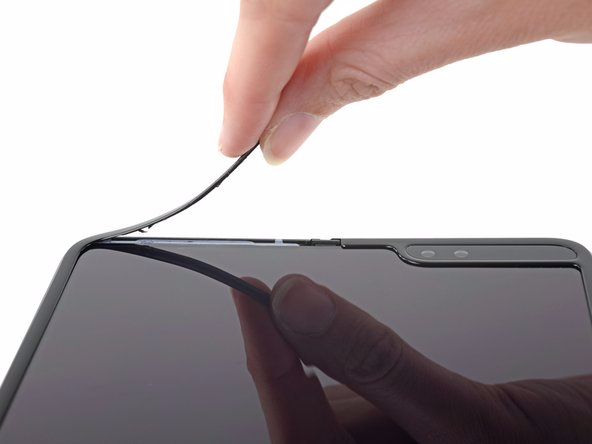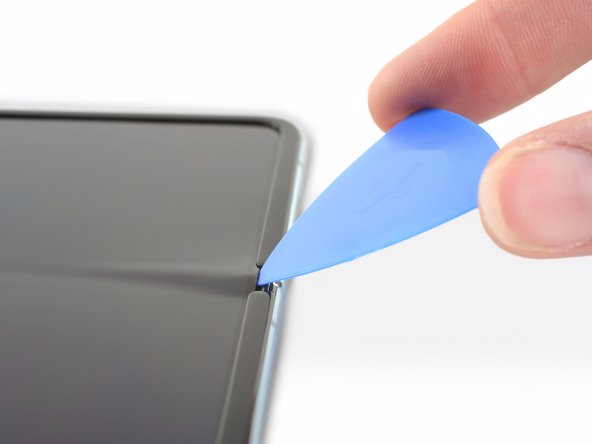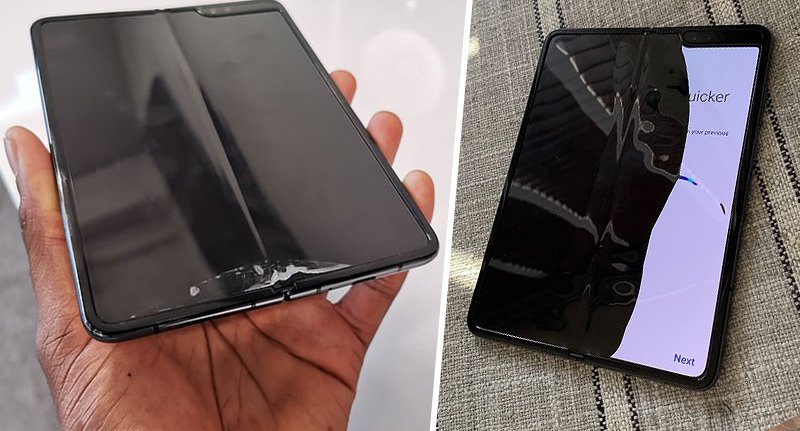The Bad
Doesn’t matter if you are a tech enthusiast or gadget freak, you most likely have heard about the display glitches on Samsung’s first foldable smartphone. If you haven’t, you can check out the full story in this post. Summarily, in preparation for the official launch of the Galaxy Fold, Samsung sent out review units of the device to tech journalist and media outlets. To everyone’s surprise (Samsung inclusive), the screen of about 80% of the review units broke. And while earlier investigations revealed that some of the Galaxy Folds broke because the users removed a core layer of the display that looked like a protective film, the fact that some users didn’t remove the layer but their Galaxy Fold’s display got damaged irrespective remained a mystery. Thanks to a teardown of the device by iFixit, we now know why some of the Galaxy Fold display broke even when the users didn’t tamper with the device. According to iFixit’s findings, some review units of the Samsung Galaxy Fold got damaged because, somehow, dirt, particles, and debris got under the display. This caused the device to have lumps underneath the display and got the screen damaged.
But how did dirt get under the display?
An Ingress point. Yes, an ingress point at the frame/edge of the Galaxy Fold is a gateway for particles to enter under the device’s display. The Galaxy Fold has a plastic display that is held to the device (using glue) by a plastic bezel. For the display to fold, however, the mid-part of the display (along the edge) isn’t held down to the device by the plastic bezel, thereby creating an “Ingress Point” for particles to make headway into the device display. According to iFixit, the ingress (read: opening) along the edge of the device was probably not covered by the bezel because the bezels aren’t flexible enough to bend. So Samsung just left the base of the Galaxy Fold open at the hinge. And when dirt gets behind the display when folded and unfolded, the hinge mechanism pushes the dirt further to the back of the display and subsequently damages it. Really, it’s BAD enough that Samsung’s Engineering team didn’t pick up the possibility of the “7mm” gap becoming this big a problem before pushing the Galaxy Fold to the hands of customers and reviewers. That said, I’m certain Samsung has learned a thing or two and will definitely subject the device to even more rigorous tests before the official launch.
The Protective Layer Error
It’s understandable that the Samsung slapped a protective layer on the Galaxy Fold’s display to prevent unplanned scratches and damages. What beats my me, however, is why Samsung failed to notify users beforehand that the layer is not a protective film, but rather a very IMPORTANT component of the display’s engineering. So important that peeling it off the screen could damage the display. Worse yet, why didn’t Samsung hide the edges of the protective layer under the bezels? At least that would prevent users from peeling it off or at least not being tempted to peel it off. Out of sight, out of mind… yes? Perhaps the protective layer was a last-second decision…which turned out to be a BAD one.
The Ugly
I stumbled upon an article on ArsTechnica which reports that Samsung (indirectly) coerced iFixit to take down the Galaxy Fold teardown. Indirectly in the sense that Samsung went after the supplier that provided iFixit with the review unit the platform used for the teardown analysis video. This prompted the supplier to urge iFixit to takedown the teardown — out of respect for the supplier. Check out iFixit’s response: Now. This. Is. Ugly. I mean why coerce an independent media outlet to takedown an honest analysis of your product? Because you don’t like that it exposes some design flaws? Or you’re scared of the bad PR? There’s no reasonable justification, really. And as ArsTechnica puts it, “In going after iFixit, Samsung is likely to get a lesson about the Streisand Effect.” For starters, the quote below explains better. Sadly for Samsung, the teardown analysis is still very much accessible on the internet, even after Samsung forced iFixit to take it off its platform. Should you be interested in the full teardown analysis, archive.org got you😉
The Good
Now to the good part hehe. But is there really any good thing about the Galaxy Fold? Definitely! I mean, it’s good enough that Samsung is one of the few OEMs that worked and dedicated resources towards bringing foldable smartphones to life. Even better, Samsung tried to bring the foldable technology into the hands of consumers early enough before every other OEM. Another (not so) impressive thing about the Galaxy Fold is the postponement of the official launch of the device to a later date. According to the South Korean manufacturer, it recalled all the units of the Galaxy Fold to make them better and fault-free. So big ups to Samsung. The Galaxy Fold should be officially ready for launch in a month or less. When it does, I personally hope there wouldn’t be anything bad nor ugly about the device. Samsung cannot afford to mess this up again. What do you think about the whole Galaxy Fold drama though? We’d love your opinion.







